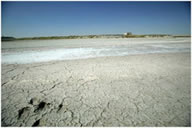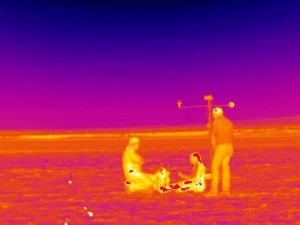|
Los Monegros campaign (Aragón – Spain). October 2011. Among the main objectives of the Mars Science Laboratory (MSL-2011) from NASA shows the environmental assessment of its area of operation on Mars, both with respect to current conditions as the existing billions of years ago, by measuring daily and seasonal variations. One of the fundamental aspects of science and instrumentation on land is the testing that enable learning from the results for interpretation when the rover is working on Mars. This is done in so-called Earth analogs, areas with geological, mineralogical, microbiological weather or unique. These areas have been selected the Los Monegros, an area with truly unique features. Previous research conducted with REMS, especially but not exclusively, related to soil temperature sensor (Temperature Sensor Ground) focused on volcanic materials testing in the area of Campo de Calatrava (Ciudad Real). The aim of this new campaign is based on the same assumptions, but will focus on this time in the gypsum and carbonate salt deposits. The work was developed specifically in the area Bujaraloz Aragon (saline lagoon complex Bujaraloz-Sástago). The high salinity, extreme aridity and strong thermal contrasts converted to their salt ponds and their general geological setting in a very restrictive REMS continuously monitored and carried out analysis of in situ IR spectroscopy are compared with the obtained in the laboratory. The results will be useful as a pre-science that can be applied once they are obtained directly REMS results on Mars. The campaign is backed by logistical and institutional Bujaraloz City Council. The test campaign will be held in October 2011 week 42 Participants in the campaign: Dr. Jesus Martinez Frias (Co-I REMS, Planetology and Habitability), Carlos Amiens (Space Instrumentation), Maria Serrano (Planetology and Habitability) and Roser Urqui (Project Management Unit)
|
|


